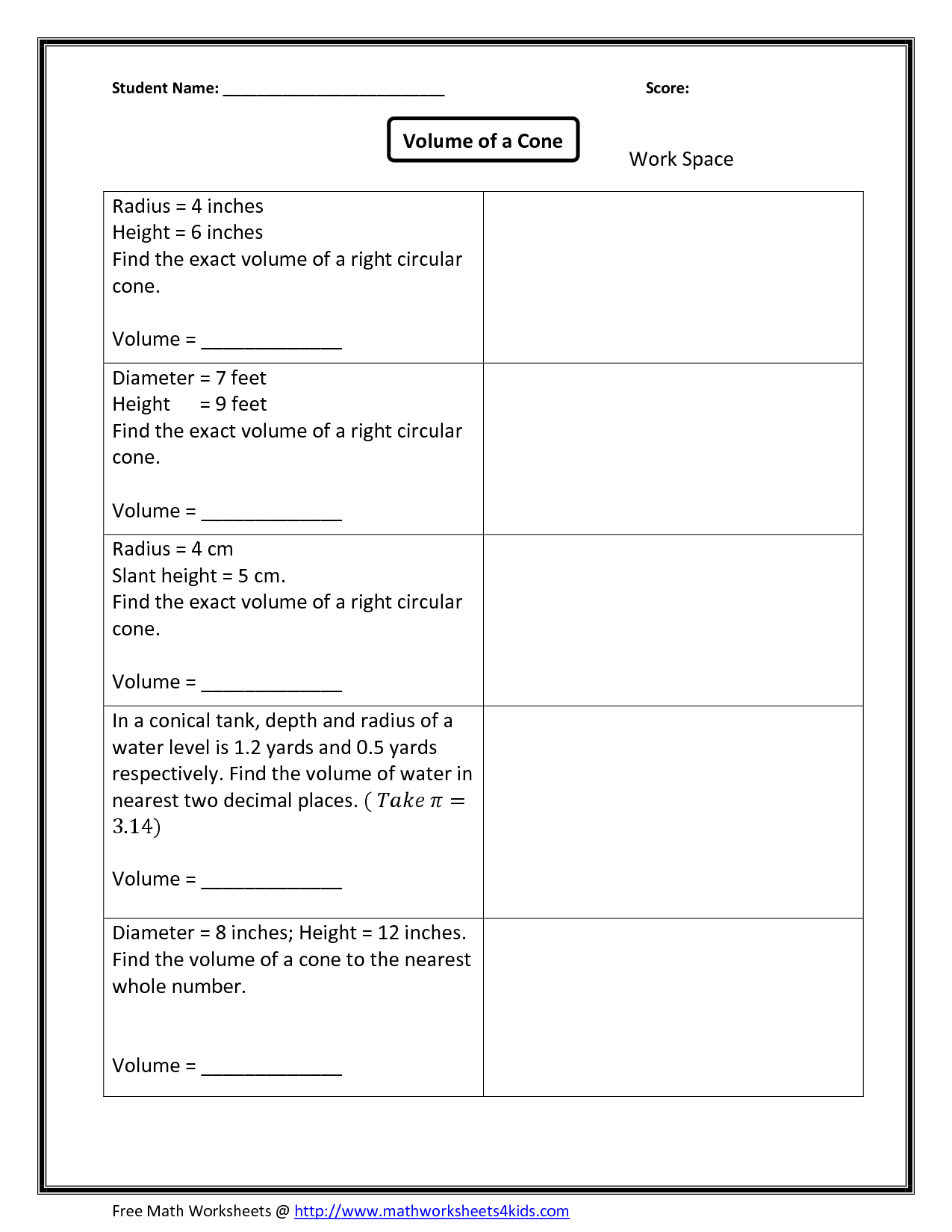Volume Word Problems 8th Grade Pdf

Find the surface area of a bar of soap if the diameter is 5 cm and the height is 2 cm. Use 3.14 for π. 2.) Chloe wants to wrap a present in a box for Sarah. The top and bottom of the box is 8 in. By 3 in., the sides are both 3 in. And the front and back are 8 in. I want students to practice using the volume formulas, so the Work Time activity is to complete four volume word problems that require a volume formula in order to solve. I instruct students to work with their partners to solve the problems and be ready to report out when the timer sounds.
Volume Word Problems 8th Grade And Answers can be very useful guide, and volume word problems 8th grade and answers play an important role in your products. The problem is that once you have gotten your nifty new product, the volume word problems 8th grade and answers gets a brief glance, maybe a once over, but it often tends to get discarded or lost with the original packaging. How it works: • 1. Register a Free 1 month Trial Account. Download as many books as you like ( Personal use ) • 3. No Commitment.
Why not more? Kak zapustitj gta 5 na pk 32 bit full. Only 32 slots? We currently only support 32 slots due to limitations of the original RAGE network framework.
Cancel anytime. Join Over 10.000.000 Happy Readers. What you waiting for? And Get Your Books.
I begin today with a review of the difference between area and perimeter. For second grade the CCSS (2.OA.C.4 and 2 GA.2) expects students to be able to create rectangular arrays, to partition of the center and count the squares to find the total, or the area of the figure.
Perimeter is not introduced in second grade, but because it is part of the district expectations, I introduce it, and use perimeter as a way to practice the adding of 2- and 3-digit numbers in expanded form. I begin with a review of area. I draw a rectangle on the board and tell students it is 4 blocks long and 2 blocks wide. I ask if anyone can come and mark off my shape to find the area. Which is area, the space covered by the rectangle or the distance around its outside? Was it the grass on the farmer's field or the fence around his lettuce? (This is a reference to the introductory lessons on area and perimeter.) After one student has partitioned off the shape and counted the area, I ask the other students for confirmation that this is correct.
I repeat this with a second shape beside the first. Now I ask if we could find the perimeter or distance around the outside of the shape? We look at the word area which is shorter than perimeter just as in is shorter than out, as another way to remember which is which. I ask for volunteers to find the perimeter of each shape. We check to see if the area and perimeter are the same.
We find that for these rectangles they are different. I have prepared that has a review of expanded form addition and subtraction, as well as a series of perimeter and area word problems for students to solve. When I do the examples I show students how I make a model of the number by expanding it out. I can put the numbers back together as well. Expanded form is an exercise in modeling with mathematics an understanding that a number can be broken apart and put back together again (MP4). I start by putting the following equation on the board: 600 + 20 + 5 + 300 + 40 + 3 = We work together, putting hundreds with hundreds, tens with tens, and ones with ones: 900 + 60 + 8 = 968 I tell students that my second one will be a bit harder.
I write: 200 + 20 + 9 + 200 + 40 + 6 Now when we put hundreds with hundreds, tens with tens, and ones with ones, we get: 400 + 60 + 15 I ask students if we can have 15 in the ones place? So what do we have to do? We have to bring ten of those into the ten's place so now we have: 400 + 60 + 10 + 5 = 400 + 70 + 5 = 475 I repeat this process with several subtraction problems, first with no borrowing and then final 2 examples with borrowing. For example: 481 - 225 = 400 + 80 + 1 - 200 + 20 + 5 I begin by matching the ones and I have 1 - 5, which I can't do so I go to the 80 and break it into 70 + 10 so I have 400 + 70 + 10 + 1.
I bring the ten to the 1 and add them to get 400 + 70 + 11 so now when I subtract the ones I have 11 - 5 = 6, 70 - 20 = 50 and 400 - 200 = 200. I add up my answers and get 200 + 50 + 6 or 256 When I feel that students are ready, I show them the paper that they will be doing. I ask them to complete the problems on the front first and then to set up a similar form to solve the word problems with area and perimeter that are on the back. I tell students that they will be working alone, but may ask a partner for help if they get stuck and I am not available. I circulate around the room to facilitate understanding. Students have about 25 minutes to work on the problems.